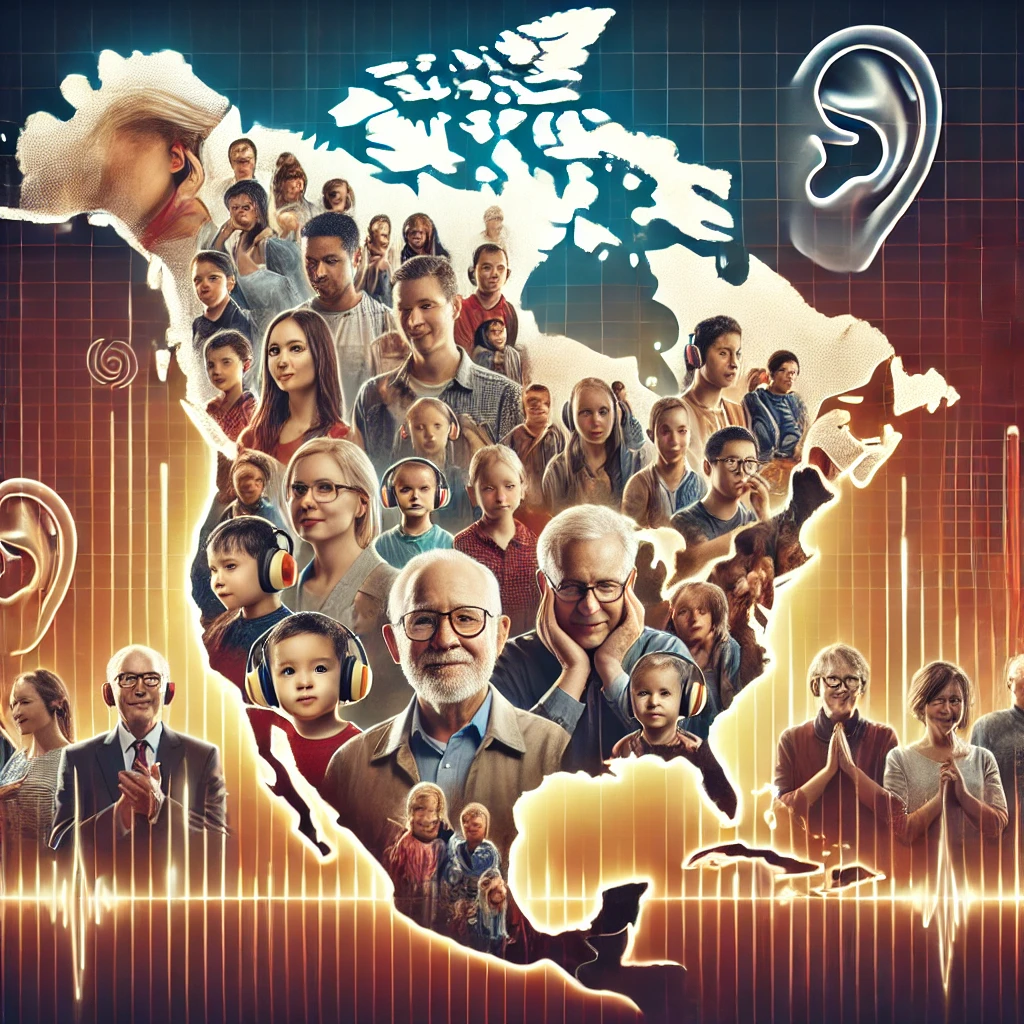Hearing loss is a rapidly growing public health concern across North America, affecting millions of individuals across various demographics. Despite its prevalence, hearing health remains one of the most overlooked aspects of overall well-being. Many people are unaware of the gradual decline in their hearing ability, and even fewer take the necessary proactive steps to address it before it’s too late.
Statistics on Hearing Loss in Different Demographics
Recent studies highlight that hearing loss is not confined to older adults; it’s becoming increasingly prevalent among younger populations as well.
- According to the World Health Organization (WHO), approximately 1.1 billion young people (aged between 12–35 years) are at risk of hearing loss due to unsafe listening practices, primarily from the use of personal audio devices and exposure to damaging sound levels at entertainment venues.
- The National Institutes of Health (NIH) reports that nearly one in five American teenagers now experience some degree of hearing loss—a number that has doubled over the past two decades.
- Among older adults, the statistics are even more alarming. The National Institute on Deafness and Other Communication Disorders (NIDCD) states that approximately one in three people in the United States between the ages of 65 and 74 have hearing loss and nearly half of those older than 75 have difficulty hearing.
These numbers paint a stark picture of the growing need for comprehensive hearing health guidance across all age groups in North America.
Current Challenges in Accessing Hearing Care
Despite the increasing prevalence of hearing loss, access to adequate hearing care remains limited due to several barriers.
- High Costs: Hearing aids and other hearing care services are often expensive, and many insurance plans do not cover them, making it difficult for many individuals to afford the care they need.
- Limited Availability of Specialists: There is a shortage of audiologists and hearing specialists, particularly in rural and underserved areas. This geographical disparity leaves many people without access to essential services.
- Lack of Awareness: Many individuals do not realize they have hearing loss until it has significantly impacted their quality of life. On average, people wait nearly seven years from the time they first notice hearing loss symptoms before seeking treatment.
The Role of Awareness and Education in Mitigating Hearing Loss
Education and awareness are critical components in addressing this growing public health issue. Regular hearing tests, early intervention, and continuous education about the risks of untreated hearing loss can significantly mitigate its long-term effects.
This is where Merlin comes in. Merlin is designed to empower individuals with the knowledge and tools they need to take control of their hearing health. By providing easy access to personalized hearing assessments and actionable insights, Merlin enables users to identify hearing issues early and take appropriate steps to prevent further deterioration.
With Your Support, We Can Revolutionize Hearing Health for All
At Summus Hearing, we envision a future where hearing health is a priority for everyone, regardless of age, location, or economic status. By backing our Indiegogo campaign, you’re not just contributing to the development of a new product; you’re helping to build a more inclusive and effective hearing healthcare system.
Together, we can ensure that everyone has the opportunity to take control of their hearing health, prevent the long-term effects of hearing loss, and enjoy a better quality of life.



